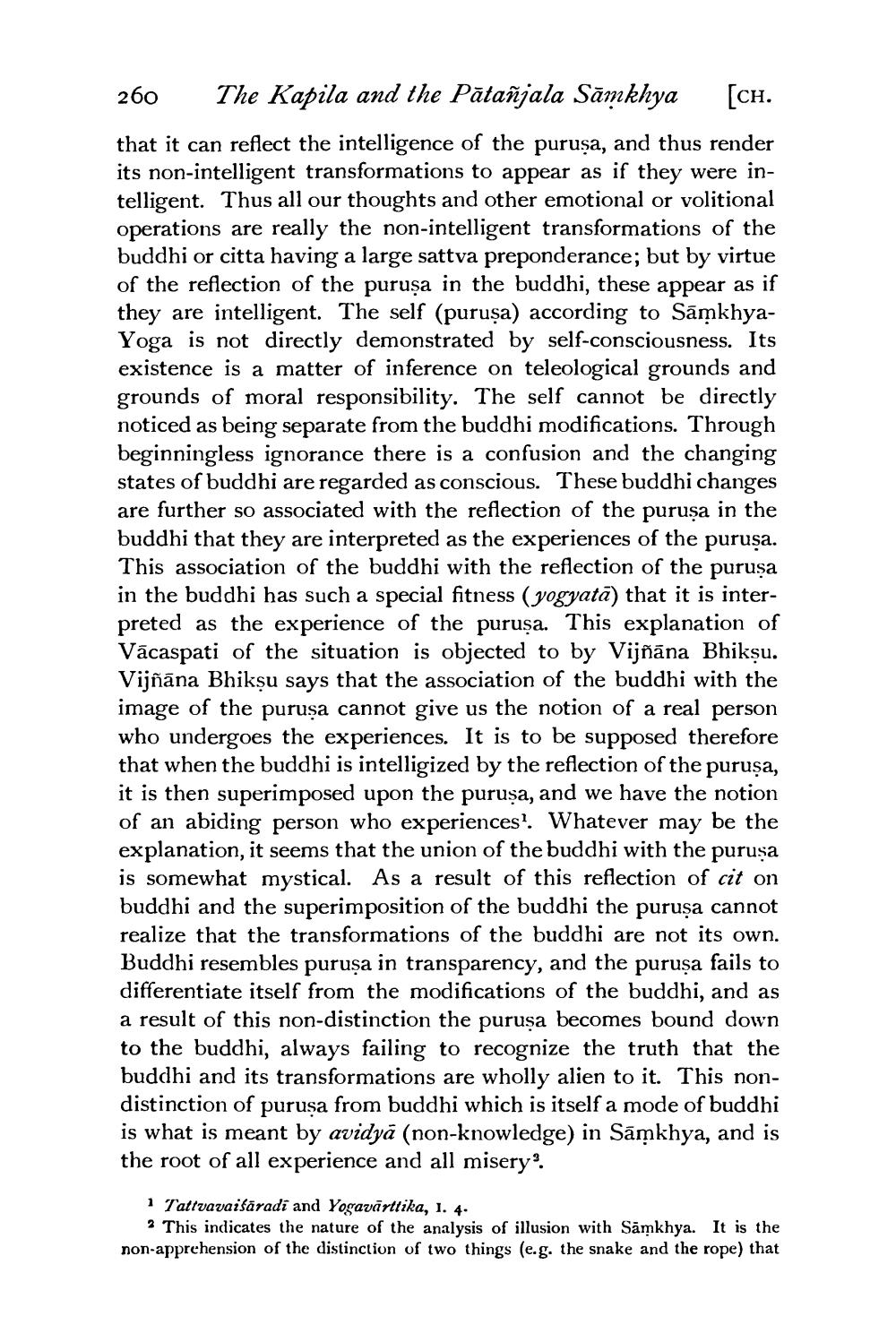________________
260 The Kapila and the Pātañjala Sāmkhya [ch. that it can reflect the intelligence of the puruṣa, and thus render its non-intelligent transformations to appear as if they were intelligent. Thus all our thoughts and other emotional or volitional operations are really the non-intelligent transformations of the buddhi or citta having a large sattva preponderance; but by virtue of the reflection of the purusa in the buddhi, these appear as if they are intelligent. The self (purusa) according to SāmkhyaYoga is not directly demonstrated by self-consciousness. Its existence is a matter of inference on teleological grounds and grounds of moral responsibility. The self cannot be directly noticed as being separate from the buddhi modifications. Through beginningless ignorance there is a confusion and the changing states of buddhi are regarded as conscious. These buddhi changes are further so associated with the reflection of the purusa in the buddhi that they are interpreted as the experiences of the purusa. This association of the buddhi with the reflection of the purusa in the buddhi has such a special fitness (yogyatā) that it is interpreted as the experience of the puruṣa. This explanation of Vācaspati of the situation is objected to by Vijñāna Bhiksu. Vijñāna Bhiksu says that the association of the buddhi with the image of the purusa cannot give us the notion of a real person who undergoes the experiences. It is to be supposed therefore that when the buddhi is intelligized by the reflection of the puruşa, it is then superimposed upon the purusa, and we have the notion of an abiding person who experiences. Whatever may be the explanation, it seems that the union of the buddhi with the purusa is somewhat mystical. As a result of this reflection of cit on buddhi and the superimposition of the buddhi the purusa cannot realize that the transformations of the buddhi are not its own. Buddhi resembles purusa in transparency, and the purusa fails to differentiate itself from the modifications of the buddhi, and as a result of this non-distinction the purusa becomes bound down to the buddhi, always failing to recognize the truth that the buddhi and its transformations are wholly alien to it. This nondistinction of purusa from buddhi which is itself a mode of buddhi is what is meant by avidyā (non-knowledge) in Sāmkhya, and is the root of all experience and all misery.
1 Tattvavai āradi and Yogavārttika, 1. 4.
? This indicates the nature of the analysis of illusion with Samkhya. It is the non-apprehension of the distinction of two things (e.g. the snake and the rope) that




